Part I of this article looks at the difference between religion and spiritual practices, and defines some terms that help us talk about our belief systems. Part II offers very brief, succinct descriptions of different African-based religions in the Americas and other universal spiritual practices that sometimes intersect with Orisha worship.
Creole religions with West African Roots
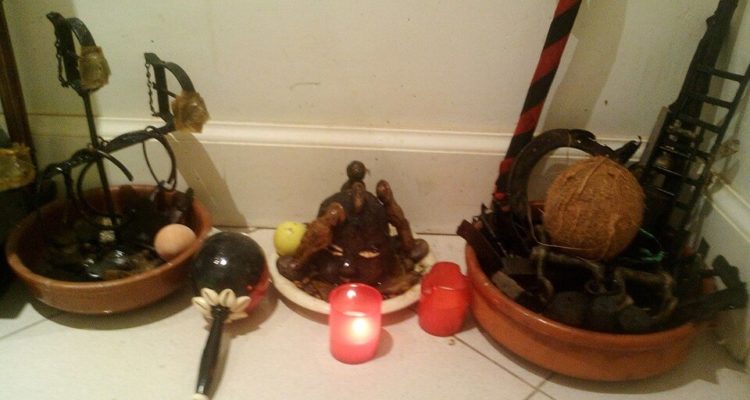
Orisha worship originated Yorubaland in West Africa many centuries ago. The roots of the Yoruba religion are at least 1,000 years old. Many people consider Yoruba religion older than Christianity, and associate the ancient city of Ile Ife in Nigeria with the creation of the world. The Oyo Empire, which became dominant in the early 17th century, greatly influenced the development of the Yoruba religion, and the collapse of this empire in the early 19th century coincided with the rapid expansion of the trans-Atlantic slave trade in the New World. Many Yoruba people were taken to the Americas in large numbers in the early to mid 19th century, and the Yoruba religion underwent a process of creolization in places like Cuba and Brazil, where it became known as Lucumi (Regla de Ocha) and Candomblé, respectively. To distinguish the creole variations from what is being practiced in modern-day Nigeria, some people refer to the West African form of Orisha Worship as Isese (meaning “tradition”), Traditional Yoruba religion, or African Traditional Religion (ATR). In the 20th century, Orisha worship spread around the world through migration, taking hold in the United States, Canada, Mexico, Europe and South America. In the United States, large communities of Orisha worshippers live in South Florida, New York City/ New Jersey, and Los Angeles, with growing numbers in Chicago, Houston, Philadelphia, Detroit, and other American cities. Due to migration patterns, the religion tends to be found more in large urban areas and less in rural or isolated regions of the US.
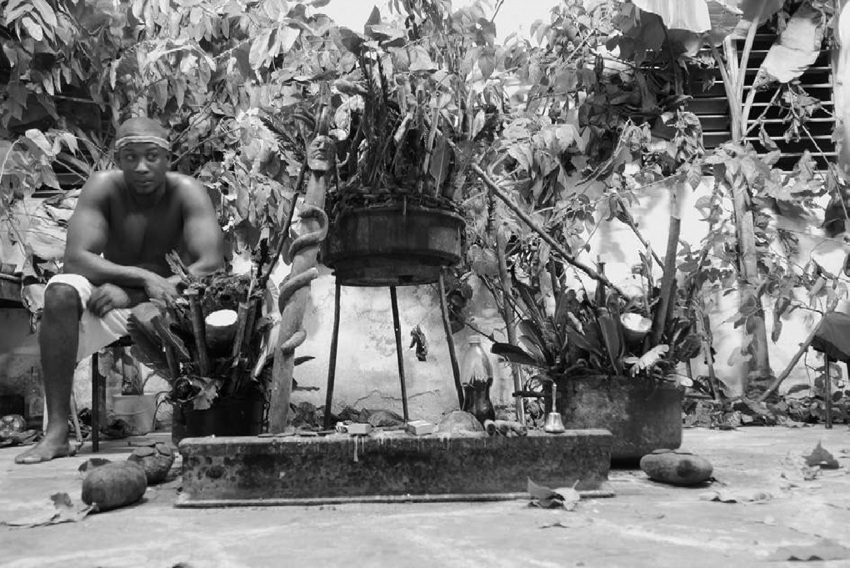
Palo (Palo Mayombe, Palo Monte, Reglas de Congo) originated in Cuba among people from the Congo Basin and their descendants in the early 19th century. It is generally thought to be of Bantu origin, although like most creole religions it combines elements of various West African ethnic groups. It expanded and grew parallel to Regla de Ocha (Lucumi) in Cuba. While some practitioners embrace both Palo and Lucumi, most people consider them separate belief systems. The deities of Palo are not called Orishas. Although some people draw parallels between them, practitioners of the religions understand Lucumi and Palo deities to be different entities. Both religions are of West African origin, and both include ancestor veneration as a central tenet. Both recognize and embrace the power of plants, herbs and other natural elements. Both function through initiation and have a priesthood. Both use divination for spiritual guidance, albeit in different forms. The fact that Palo is called Reglas de Congo implies that it is an organized religion with a priesthood, a cosmology, a set of doctrines, and protocols for religious ceremonies, even though they have not been written down and codified in a single sacred text, such as the Bible. There is no centralized authority over all practitioners, but each group has a recognized priesthood and practitioners are expected to practice the religion according to guidelines passed on by their elders. In this sense, it is similar to Regla de Ocha.
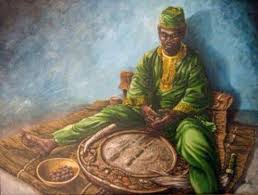
Vodou (also spelled Voudou, Vodun, Vudú, Vaudou, or Voodoo) is a creole religion that originated in Haiti among the Dahomey people and their descendants. Some influence of the Kongo and Yoruba people can also be seen in Vodou. The deities of Vodou are called Lwas. Like other creole religions of West African origin, Vodou operates through initiation and has an established priesthood. Although there is no centralized authority, tradition is maintained through a social hierarchy in which elders teach new priests, mainly through oral instruction and hands-on experience. Vodou shares some characteristics with Lucumi and Palo, such as the importance of trance possession, drumming as a means of communicating with the divine, the organization of worshippers into societies or houses led by a priest, and the belief in the importance of living in harmony with the natural world. Vodou is considered a religion in its own right, separate from Lucumi and Palo. It’s possible for people to be initiated into more than one of these religions, but practitioners understand they are separate belief systems, each with its own character, history, rituals and customs. During and after the Haitian Revolution at the end of the 18th century, Eastern Cuba received many immigrants from Haiti and the influence of Vodou can be found in some places there.
Spiritual practices that sometimes overlap with
Orisha Worship in the New World
 A bóveda espiritual can take different forms, but they always include a white table cover and at least one clear glass of water
A bóveda espiritual can take different forms, but they always include a white table cover and at least one clear glass of water Espiritismo is a spiritual practice or tradition rather than an organized religion. Associated mostly with the Spanish Caribbean now, its roots are in the European Spiritist movement of Allen Kardec (France, 1804-1869). Kardec was interested in the mechanics of communication with the spirit world and hoped to develop it as a science. In Latin America, it took on its own nature due to the presence of African and folk-Catholic beliefs in places like Cuba and Puerto Rico in the second half of the 19th century. Some Lucumi houses and practitioners embrace espiritismo as part of their spiritual belief system, but most people see Orisha worship and Espiritismo as two separate (but parallel) traditions. Olorishas aren’t required to practice espiritismo, and not all espiritistas are initiated as Olorishas. The degree of intertwining of the two traditions varies greatly depending on the individual and the house they’re from. Espiritismo doesn’t require initiation for those who practice it. There is no priesthood in espiritismo, although some people are recognized as very talented and effective mediums. The written works of Kardec and Catholic prayers are often used as reference points and tools for communication with the spirit world. Espiritistas conduct misas or spiritual masses as one of their most important practices.
Folk religion is an umbrella term that refers to popular beliefs, often based on specific ethnic or regional traditions, that are outside the dogma and doctrine of official, organized religions. For example, folk Catholicism isn’t recognized by the Catholic Church, but it is a parallel system of belief that often has roots in pre-Christian traditions, legends or mythology from earlier peoples and cultures. The cult of Santa Muerte in Mexico is an example. It is not recognized as part of Catholic doctrine, but has ties to pre-Colombian cultures and is embraced by many Catholics in Mexico. There are examples of folk religion in almost all cultures. You can find examples of it in Judaism, Islam, Hinduism, Taoism, Christianity, and many others. Some elements of folk Catholicism, such as the veneration of particular saints as the patrons of particular causes, has influenced the evolution of the Lucumi religion in Cuba. For example, December 17 is celebrated by many Cubans as the day of San Lázaro, the patron saint of those who suffer from infectious disease. It is also a day when many Lucumi practitioners do an agban (spiritual cleaning) to rid themselves of sickness and the threat of death. Folk religion provides people with a spiritual understanding of the world, even though it usually has no clearly defined theological doctrine. It sometimes has a mystical or magical aspect to it, as it predates our modern scientific world and isn’t dependent on modern logic.

Paganism is a vague word with multiple meaning and connotations, including pejorative ones when used by Christians to describe polytheistic or animistic belief systems. Modern Paganism or Neo-paganism is generally regarded as a movement in which people recreate or embrace belief systems from the remote past such as Druidism, Kemetism, and Shamanism, among others, or combine elements of ancient belief systems to create modern variations such as Wicca or Pagan Witchcraft. People who identify as pagans generally don’t embrace the teachings of an officially recognized religion like Christianity, Judaism, or Islam, but consider paganism as an alternative to those institutions. Some pagan groups have recreated a priesthood through consecration or initiation or training, but there is generally no centralized authority that dictates doctrine and ritual practice on a national or international level. Most Orisha worshippers do not consider themselves Pagans nor do they think of Orisha worship as a pagan practice. In the US, Canada and Europe, some people who are involved in paganism may be drawn to Orisha worship because of its animistic nature, but in order to practice Orisha worship, they are expected to follow the norms and protocols of established Orisha communities, including initiation for those who want to perform Orisha rituals.
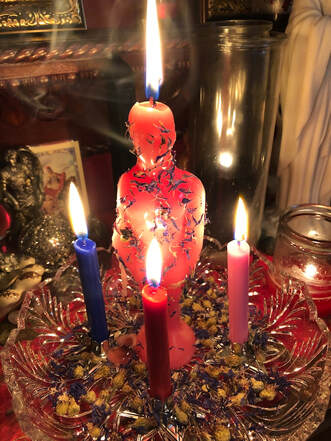 Candlework is one aspect of Hoodoo/ Conjure work.
Candlework is one aspect of Hoodoo/ Conjure work. Hoodoo (also called low country Voodoo or Louisiana Voodoo) is an African-American spiritual tradition that developed in South Carolina low country, Louisiana, and other regions of the American South in the 18th and 19th centuries, with roots in West African religious practices. Other terms associated with hoodoo are conjure work and root work. Through spells, potions, powders, talismans, candle or lamp work, working with spirits of the dead, and other practices associated with folk magic, hoodoo offers a support system and remedies to people who seek help in the realm of money, health, love, family relationships, fertility, legal issues, and employment, among other things. The practice of hoodoo doesn’t require initiation or a priesthood, although some people are recognized for their abilities and power to do effective spell work. Hoodoo is not an organized religion, but a set of spiritual practices and beliefs. Hoodoo is not part of Orisha worship, although Orisha worshippers with cultural ties to the American south may incorporate aspects of Hoodoo into their belief system. A Hoodoo practitioner who wants to do rituals involving the Orishas is expected to adhere to the norms and customs of established Orisha practice. Hoodoo root workers and conjurers do not have license to do Orisha ceremonies and rituals unless they have been initiated in a Lucumi, Candomblé, or Isese house.
A number of other creole spiritual traditions of African origin exist in the Americas, such as Obeah, Myal, Quimbois, Spiritual Baptist, Winti, Trinidad Orisha, Sansé, Rastafari, Abakuá, Cuban Vodú, Dominican Vudú (21 divisions), Umbanda, Batuque, etc. Each one has its own character, history, and set of practitioners. It’s important not to confuse them with each other, or conflate them. Depending on geography, ethnicity, and cultural connections, people may feel called to follow one or more of these paths, either in conjunction with Regla de Ocha or independent of it.
Where does that leave us?
You're free to practice the religion you like, and to work with whatever spiritual practices appeal to you. However, there are a few things to keep in mind:
1. Find and work with a mentor, a respected elder, a godparent who can guide you and help you understand the tradition you've chosen. Much of the knowledge associated with these religions and practices has been passed on orally, and you will not find everything you need to know in a book or on the internet.
2. Understand what cultural appropriation is, and don't do it. If you enter a religion, respect the people it comes from. Don't take just the parts you like and ignore the rest. Don't try to change it to fit your own worldview. It is what it is. Don't try to turn it into something else.
3. Don't assume the functions and role of a priest if you don't have authority to do that. If initiation is required to carry out ceremonies, respect that process.
1. Find and work with a mentor, a respected elder, a godparent who can guide you and help you understand the tradition you've chosen. Much of the knowledge associated with these religions and practices has been passed on orally, and you will not find everything you need to know in a book or on the internet.
2. Understand what cultural appropriation is, and don't do it. If you enter a religion, respect the people it comes from. Don't take just the parts you like and ignore the rest. Don't try to change it to fit your own worldview. It is what it is. Don't try to turn it into something else.
3. Don't assume the functions and role of a priest if you don't have authority to do that. If initiation is required to carry out ceremonies, respect that process.


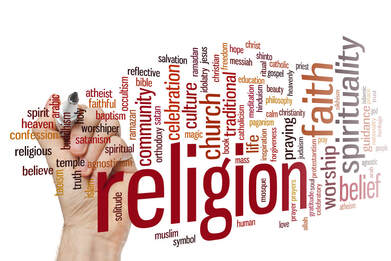


 RSS Feed
RSS Feed
